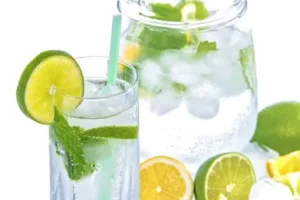Over time, human bones change, most often in elderly women. The problem does not have to affect only older people, contrary to appearances, men and young people can also suffer from ailments that may turn into osteoporosis. Hormonal changes and nutrition are important. Eating disorders that result in too much calcium loss cause bones to weaken and become brittle as a result. Osteoporosis in its initial phase does not present too many symptoms, but it develops quickly, where minor injuries eventually become a problem, such as bone fractures. In this case, fractures occur around the wrists and the spine becomes more delicate. Collagen, i.e. the body's protein found in connective tissue, including cartilage, tendons and bones, is responsible for elasticity and protection against any damage.
What can increase the risk of osteoporosis?
- drugs that neutralize stomach acid
- caffeine
- lithium salts
- Thyroid hormones
- mineral deficiencies, including calcium
- diabetes
Mineral absorption problems occur when nutrients are not properly absorbed due to disorders in the digestive tract. The resulting impairment may cause many diseases. When the amount of calcium decreases and a deficiency occurs, the body takes calcium from the bones for the functioning of the heart and other organs.
Calcium is needed in the reconstruction process, so you should consume products rich in this element and supplements aimed at proper regulation.
The role of vitamin D3
Vitamin D3 regulates the metabolism of calcium and phosphorus, and it is not without reason that it is recommended for small children and the elderly. In order for calcium to be properly absorbed in the body, it is necessary to supply vitamin D, the deficiency of which stimulates bone resorption. A natural complement is the sun's rays. Vitamin D3 is also found in food such as fish, fish roe, plums and cream.
Diet of people with osteoporosis
The most important element of the diet is providing the body with calcium, which plays an important role in building and maintaining the proper condition of bones. Dairy products and their products are rich in calcium, an example is yellow cheese, which should be eaten because it contains much more calcium than cottage cheese; the rule is to eat it in moderation due to its high fat content. Providing at least one glass of milk and carrot juice daily is perfect for prevention.
In addition to B vitamins, carrot juice also contains vitamins A, K, H, E, PP and K, as well as essential calcium and iron.
Milk products
Kefir contains bacteria and fungal cultures that cause the process of lactic fermentation and, as a result, inhibit the development of bad bacteria that lead to food rotting.
Consuming kefir and including it in your daily diet has a beneficial effect on proper intestinal peristalsis and alleviates the symptoms of gastrointestinal ailments. Additionally, they eliminate chronic constipation. People struggling with digestive system problems are recommended to consume kefir, which will help stabilize the functioning of the organs. And also probiotic preparations such as BIOTIC, TRIOBIOLAC.
Providing protein
The role of protein in the body is to build collagen, which strengthens bones. Please remember that taking large amounts of protein may harm your body by stimulating the body to excrete particularly large amounts of calcium. The protein requirement should be in the range of 50-63 gr/day, it is important not to consume it in excessive amounts.
Calcium is an important element that must be supplied to the body, but for it to be properly absorbed, it must be taken together with magnesium and vitamin D.
Mineral water is an excellent choice because it has a high concentration of calcium. It has been proven that it is absorbed as well as dairy products, so drink it in large quantities.
Magnesium deficiency is another problem that can cause muscle weakness and, as a result, we experience frequent cramps. It regulates calcium transport and increases the mineral density of spongy bone tissue. Magnesium deficiency negatively affects the secretory function of the kidneys. The sources of magnesium are primarily green leafy vegetables, peas, beans, sunflower seeds and nuts.
Vitamin K2
It is responsible for maintaining proper blood coagulation and enables the synthesis of prothrombin in the liver. Osteocalcin – a non-collagen protein, is involved in the initial stages of mineralization of connective tissue. In older people, the level of osteocalcin is low, so vitamin K supplementation helps to bring it back to normal. Natural sources of vitamin K are vegetables such as tomatoes, soybeans and peas.
Tomato juice contains a large amount of lycopene, which has antioxidant properties and is able to inhibit the progressive degeneration of bone tissue. A great solution is to make natural juice at home from high-quality tomatoes.
Silicon
As a result of silicon deficiency, soft tissues calcify, making the bones brittle and much more sensitive to any injuries. Silicon contributes to the increase in bone density by making collagen fibers more flexible, therefore it is of great importance in the formation of glycosaminoglycan in bones.
A high silicon content can be found in horsetail herb, which also contains saponins that have anti-inflammatory properties, as well as alkaloids and organic acids.
It is recommended to consume the herb in the form of an infusion of 2-3 glasses a day.
Omega 3 fatty acids help
Unsaturated fats are very important in the diet of children, adults and the elderly.
They are provided as part of the diet, especially in people with heart disease and atherosclerosis. They reduce bad cholesterol and increase good HDL. In osteoporosis, omega 3 fatty acids reduce cytokines that normalize bone resorption. The sources of acids are fatty fish, cold-pressed oils (evening primrose, linseed, walnuts) and nuts.
There is also a method of supplementing ready-made preparations based on fish fat (cod liver oil)
Vitamin C
It contributes to the production of collagen, the structure of blood cells in the body and accelerates the healing of wounds. Its deficiency causes weakness of the body and frequent infections, and also causes fatigue and drowsiness. Ascorbic acid, or vitamin C, is the main antioxidant – it scavenges free oxygen radicals. In the autumn and winter period, the body should be strengthened by providing vitamin C to defend itself against external factors that may trigger the possibility of micro-hemorrhages in various organs.
Supplementation is supplementing the food ration with ingredients used periodically.
Support may take the form of providing food products or ready-made dietary supplements in the form of capsules or preparations. However, doses should be controlled and not exceeded. Consuming large amounts of ready-made and natural supplements may cause side effects. Therefore, remember to take the ingredients in line with your needs.
In the case of osteoporosis, it is not only enough to supplement calcium, but also with essential vitamins and minerals. The key element is the memory of protein and unsaturated fats, they will help the proper functioning of the entire body and prevent diseases related to the internal and external systems. This is of great importance in the case of people suffering from chronic diseases, who are particularly vulnerable to the development of a new disease, which requires additional treatment and a special diet. By introducing individual ingredients into our diet, we not only protect our bones, but also protect against high cholesterol, heart disease and hypertension.
What about physical activity?
In the treatment of osteoporosis, physical activity is very important. All you need to do is spend a little time a day exercising to improve your condition and fitness. There are many options that you can choose for your own comfort. You can start with professional training under the supervision of a caregiver who pays close attention to performing the correct exercises. The second option is to take on the challenge of an active lifestyle yourself. The best sports and exercises for osteoporosis are hiking and walking with poles, which increase muscle activity and reduce the burden on joints and hips; the others are swimming, aerobics and skiing.
Cyclic exercises are aimed at loading and strengthening specific sections of the skeleton and activating muscles. Physical activity is recommended especially for older people who can safely take care of their fitness and the musculoskeletal system. A healthy diet and physical activity can add vitality, which improves not only the condition of the body but also the psyche.
Preparations and capsules recommended for use in the symptoms of osteoporosis
Calcium Sandoz forte – calcium supplementation supporting the prevention and treatment of osteoporosis
Vitrum Calcium +Vit.D3 – calcium with vitamin D3 maintaining the proper condition of bones and teeth
Silicum + H (SILICAN + BIOTIN) – supplementing the diet with silicon and vitamin B7
Akavit Max Vitamin K2 – improves bone condition and helps reduce the risk of osteoporosis
Calcium Osteo D3 – multi-ingredient dietary supplement containing vitamins and minerals such as calcium, vitamin D3, vitamin K1, copper, zinc and L-lysine
Calcium Magnesium Plus – a unique combination of calcium and magnesium in an optimal 2:1 ratio, enriched with natural vitamins D3 and K2
Shark cartilage – a dietary supplement supporting the therapy of the osteoarticular system, containing calcium and phosphorus.
Author: Kamila Karmowska, health and dermocosmetics advisor




